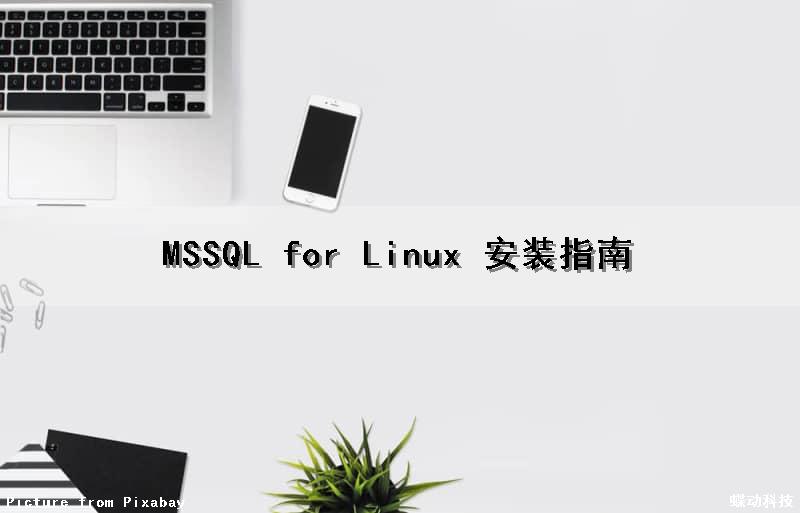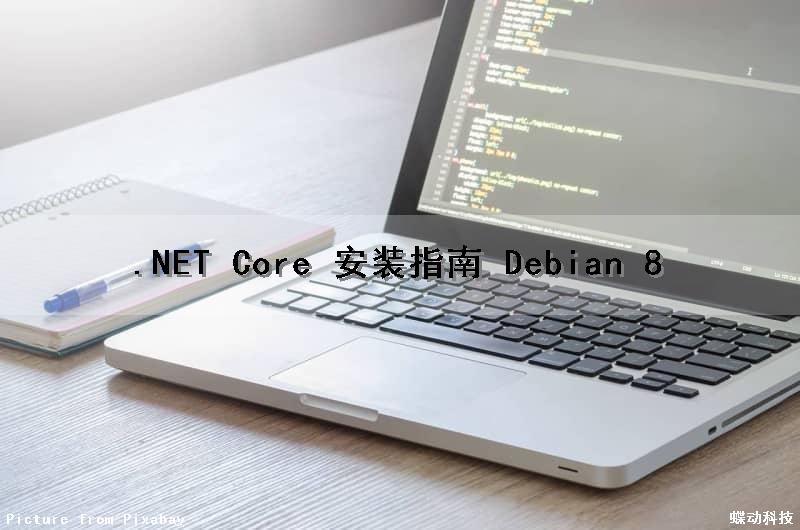本文将为您提供关于MSSQLforLinux安装指南的详细介绍,同时,我们还将为您提供关于.NETCore安装指南Debian8、ArchLinux安装指南、BinderHub安装指南、Conflue
本文将为您提供关于MSSQL for Linux 安装指南的详细介绍,同时,我们还将为您提供关于.NET Core 安装指南 Debian 8、Arch Linux 安装指南、BinderHub 安装指南、Confluence 6 安装指南的实用信息。
本文目录一览:
MSSQL for Linux 安装指南
1、安装源
sudo curl -o /etc/yum.repos.d/mssql-server.repo https://packages.microsoft.com/config/rhel/7/mssql-server-preview.repo
[[email protected] etc]# cd /etc/yum.repos.d/
[[email protected] yum.repos.d]# ls
CentOS-Base.repo CentOS-CR.repo CentOS-Debuginfo.repo CentOS-fasttrack.repo CentOS-Media.repo CentOS-Sources.repo CentOS-Vault.repo mssql-server.repo
2、安装MSsql
yum install mssql-server
3、安装完成后,配置SETUP
[[email protected] /]# /opt/mssql/bin/mssql-conf setup
选择 sql Server 的一个版本:
1) Evaluation (免费,无生产许可,180 天限制)
2) Developer (免费,无生产许可)
3) Express (免费)
4) Web (付费版)
5) Standard (付费版)
6) Enterprise (付费版)
7) Enterprise Core (付费版)
8) 我通过零售渠道购买了许可证并具有要输入的产品密钥。
可在以下位置找到有关版本的详细信息:
https://go.microsoft.com/fwlink/?LinkId=852748&clcid=0x804
使用此软件的付费版本需要通过以下途径获取单独授权
Microsoft 批量许可计划。
选择付费版本即表示你具有适用的
要安装和运行此软件的就地许可证数量。
输入版本(1-8): 2
可以在以下位置找到此产品的许可条款:
/usr/share/doc/mssql-server 或从以下位置下载:
https://go.microsoft.com/fwlink/?LinkId=855862&clcid=0x804
可以从以下位置查看隐私声明:
https://go.microsoft.com/fwlink/?LinkId=853010&clcid=0x804
接受此许可条款吗? [Yes/No]:yes
选择 sql Server 的语言:
(1) English
(2) Deutsch
(3) Español
(4) Français
(5) Italiano
(6) 日本語
(7) ???
(8) Português
(9) Русский
(10) 中文 – 简体
(11) 中文 (繁体)
输入选项 1-11:1
输入 sql Server 系统管理员密码:
确认 sql Server 系统管理员密码:
正在配置 sql Server...
ForceFlush is enabled for this instance.
ForceFlush feature is enabled for log durability.
Created symlink from /etc/systemd/system/multi-user.target.wants/mssql-server.service to /usr/lib/systemd/system/mssql-server.service.
安装程序已成功完成。sql Server 正在启动。
4、验证服务是否正常开启
[[email protected] /]# systemctl status mssql-server ● mssql-server.service - Microsoft sql Server Database Engine Loaded: loaded (/usr/lib/systemd/system/mssql-server.service; enabled; vendor preset: disabled) Active: active (running) since 一 2019-05-20 11:16:37 CST; 47s ago Docs: https://docs.microsoft.com/en-us/sql/linux Main PID: 26015 (sqlservr) CGroup: /system.slice/mssql-server.service ├─26015 /opt/mssql/bin/sqlservr └─26037 /opt/mssql/bin/sqlservr 5月 20 11:16:41 localhost.localdomain sqlservr[26015]: 2019-05-20 11:16:41.51 Server Server is listening on [ 127.0.0.1 <ipv4> 1434]. 5月 20 11:16:41 localhost.localdomain sqlservr[26015]: 2019-05-20 11:16:41.51 Server Dedicated admin connection support was established for listening locally on port 1434. 5月 20 11:16:41 localhost.localdomain sqlservr[26015]: 2019-05-20 11:16:41.51 spid20s sql Server is Now ready for client connections. This is an informational message; no user action is required. 5月 20 11:16:42 localhost.localdomain sqlservr[26015]: 2019-05-20 11:16:41.99 spid9s Starting up database ‘tempdb‘. 5月 20 11:16:42 localhost.localdomain sqlservr[26015]: 2019-05-20 11:16:42.24 spid9s The tempdb database has 1 data file(s). 5月 20 11:16:42 localhost.localdomain sqlservr[26015]: 2019-05-20 11:16:42.28 spid16s The Service broker endpoint is in disabled or stopped state. 5月 20 11:16:42 localhost.localdomain sqlservr[26015]: 2019-05-20 11:16:42.28 spid16s The Database Mirroring endpoint is in disabled or stopped state. 5月 20 11:16:42 localhost.localdomain sqlservr[26015]: 2019-05-20 11:16:42.36 spid16s Service broker manager has started. 5月 20 11:16:42 localhost.localdomain sqlservr[26015]: 2019-05-20 11:16:42.43 spid5s Recovery is complete. This is an informational message only. No user action is required. 5月 20 11:16:45 localhost.localdomain sqlservr[26015]: 2019-05-20 11:16:45.31 spid33s The activated proc ‘[dbo].[sp_syspolicy_events_reader]‘ running on queue ‘msdb.dbo.syspolicy_event_queue‘ output the following: ‘Transaction (Proc... Hint: Some lines were ellipsized,use -l to show in full.
5、开启远程访问,将开放端口1433
[[email protected] /]# firewall-cmd --zone=public --add-port=1433/tcp --permanent success
6、测试连接正常使用。

.NET Core 安装指南 Debian 8
-
1
Install .NET Core SDK
Before you start, please remove any previous versions of .NET Core from your system.
In order to install .NET Core 1.1 on Debian, first you need to get the prerequisites and then you download the .NET Core SDK binaries, extract them onto your system and put
dotnetonto your PATH..NET Core 1.1 is the latest version. For long term support versions and additional downloads check the all Linux downloads section.
- sudo apt-get install curl libunwind8 gettext
- curl -sSL -o dotnet.tar.gz https://go.microsoft.com/fwlink/?LinkID=835021
- sudo mkdir -p /opt/dotnet && sudo tar zxf dotnet.tar.gz -C /opt/dotnet
- sudo ln -s /opt/dotnet/dotnet /usr/local/bin
-
2
Initialize some code
Let''s initialize a sample Hello World application!
- mkdir hwapp
- cd hwapp
- dotnet new
-
3
Run the app
The first command will restore the packages specified in the project.json file, and the second command will run the actual sample:
- dotnet restore
- dotnet run
-
And you''re ready!
You now have .NET core running on your machine!
Visit the .NET Documentation to get access to additional tutorials, samples and the full .NET Core documentation.

Arch Linux 安装指南
1. 前提
为什么推荐Arch Linux?因为它好用呗!
如果想要学习Linux,Arch Linux是个很好的选择。Arch Linux提供了非常详细并且更新及时的Wiki(帮助文档),使用系统的过程中遇到的问题基本上都空余从上面找到。
Arch Linux采取滚动更新的方式,一旦系统或者软件有新版本发布,你就可以升级它们。你的系统以及软件始终处在最新的状态,因此系统不存在发布新系统而要重装的问题。
但Arch Linux安装比较繁琐,整个安装过程都在命令行下执行,这也是很多人觉得它很难安装的原因。其实安装并不难,步骤繁琐是真的,只要你有耐心,这都没问题。一旦你从头到尾安装完毕,你就掌握了许多基本的知识,比如分区的创建与挂载、系统引导安装、配置软件源等,这些对于学习Linux来说是好事。
如果你只是体验以下Linux,不想深入它,或者想要一个开箱即用的生产环境,那么我推荐Ubuntu LTS。如果是作为需要非常稳定的服务器,我推荐Debian和CentOS。
1.1 非常重要:
为了你的数据安全,如果你没有任何Arch Linux的安装经验,或者不具备基本的Linux基础,我不建议你直接在已有数据的硬盘上执行本教程的安装!你可以先在虚拟机尝试本次安装。
1.2 本文不是针对零基础的用户,因此你必须具备这些技能:
如果是Windows用户你应该会划分出空余的磁盘空间
了解Linux分区以及挂载的概念
遇到问题时会利用搜索引擎
1.3 本文不会对任何行为作担保,包括但不仅仅包括:
为了易于理解不保证对每个名词作出专业表达
阅读本教程作出的任何操作带来的后果
由于本人疏忽带来的错误(欢迎指正)
1.4 为了顺利安装,你得准备有:
格式化为Fat32的U盘;
50G空余空间得磁盘空间,最好是“未分配”;
ArchLinux最新的系统镜像,点击进入下载页面;
1.5 将镜像写入到U盘:
Linux系统下使用dd命令;Windows用户使用Rufus ,或者 USBwriter 、win32diskimager 也可以。
1.6 书写约定
在本教程中,Linux命令以井号(#)打头,例如:
# ls -al
1.7 建议
本教程尽量以人性化的方式完成Arch Linux的安装,但难免有没有详尽的地方,建议结合官方Wiki阅读本篇教程。
Installation guide (English Version)
Installation guide (简体中文)
因为安装Arch Linux非常简单,所以全程没有配图。
2. 系统的基本安装
本章节完成最基本的系统安装,只有命令行界面的Arch Linux系统。
2.1 通过BIOS设置U盘为最先启动项
2.2 进入安装盘系统选择第一项
UEFI模式第一项是“Arch Linux archiso x86_64 UEFI USB”
BIOS模式第一项是“Boot Arch Linux (x68_64)”
2.3 键盘布局(可忽略)
默认是美式键盘映射,一般我们的键盘都是美式键盘。
2.4 验证启动模式
# ls /sys/firmware/efi/efivars
如果有东西输出则是UEFI,否则BIOS。这一步决定后面的引导安装,虽然在2.2节已经确定启动模式,以防万一还是再验证下。
2.5 连接到因特网
# ping -c 3 archlinux.org
网络必须能与外网连接,因为系统安装其实就是从一个叫做“软件源”的网站下载所需要的软件并安装。ping命令就是检查能不能连接到对应的网址,如果界面有像这样“PING archlinux.org (ip地址)…”的输出一般就是没问题了。
2.6 更新系统时间
# timedatectl set-ntp true
就是简单的对时。
2.7 硬盘分区
首先查看存储设备
# fdisk -l
输出像“Disk /dev/sda xx GiB …”这种的,xx也就是该存储设备的总容量,然后你判断哪个设备是有多余空间的。假如该设备是/dev/sda,这时候你还可以通过如下命令查看该存储设备下已有的分区情况:
# fdisk -l /dev/sda
如果存在已有分区,将会看到包含/dev/sda1,/dev/sda2……等分区信息。这时候我们在该磁盘上的未分配空间上开始建立新分区,用来安装Arch Linux:
# fdisk /dev/sda
进入了fdisk分区工具里边,可以使用如下功能:
m: 查看帮助
n: 新建分区
p: 查看已分区信息列表
w: 保存本次分区操作结果并退出
q: 不保存本次分区操作结果并退出
对于如果你不太了解分几个分区合适,那么建议只分一个分区用来安装系统即可。因此,如果你是BIOS模式:
只需要一个分区用于系统安装(50G)
如果你是EFI模式,需要分两个分区:
第一个分区用于系统引导(512M)
第二个分区用于系统安装(49G)
如下给出使用fdisk进行分区的示例
如果是BIOS模式:(只有系统安装分区)
1 输出 n 创建分区
2 Partition type是分区类型,p是主分区,e是扩展分区,直接按回车键选择默认
3 Partition number是分区编号,直接按回车键选择默认
4 First sector是开始的部分,直接按回车键选择默认
5 Last sector是结尾的部分,输入 +50G,按回车键
如果是UEFI模式:
第一个分区(引导分区)
1 输出 n 创建分区
2 Partition type是分区类型,p是主分区,e是扩展分区,直接按回车键选择默认
3 Partition number是分区编号,直接按回车键选择默认
4 First sector是开始的部分,直接按回车键选择默认
5 Last sector是结尾的部分,输入 +512M,按回车键
6 输入 t 准备将该分区更改为EFI类型分区,输入序号选择分区。输入 L 查看支持的类型,找到EFI类型前面对应的序号,这里的序号是 ef 。输入 ef 按回车键。
第二个分区(系统安装分区)
1 输出 n 创建分区
2 Partition type是分区类型,p是主分区,e是扩展分区,直接按回车键选择默认
3 Partition number是分区编号,直接按回车键选择默认
4 First sector是开始的部分,直接按回车键选择默认
5 Last sector是结尾的部分,输入 +512M,按回车键
记住刚分区的设备名
输入p查看分区列表
BIOS模式请记住刚刚新建立的分区设备名,我这里假如是/dev/sda5;UEFI模式请记住刚刚新建立的两个分区的设备名,我这里假如是/dev/sda5(512M)和/dev/sda6(49G)。
输入w保存分区操作并继续安装系统。
2.8 格式化分区
Linux支持安装在ext4的文件系统上,如果是UEFI模式,那么引导分区的文件系统类型应该是Fat32。
如果是BIOS模式:
# mkfs.ext4 /dev/sda5
如果是UEFI模式:
# mkfs.fat -F32 /dev/sda5
# mkfs.ext4 /dev/sda6
2.9 挂载分区
挂载新分区到/mnt
# mount /dev/sda5 /mnt
如果是UEFI模式,还需要挂载引导引导分区(注意执行顺序)
# mount /dev/sda6 /mnt
# mkdir -p /mnt/boot/efi
# mount /dev/sda5 /mnt/boot/efi
2.10 设置软件源
默认使用的是国外的软件源,下载的速度很慢,因此需要改为国内的源。通过vim命令编辑软件源配置文件。
# vim /etc/pacman.d/mirrorlist
按i切换到编辑模式,在该文件最前面加入如下的网易源:
Server = https://mirrors.163.com/archlinux/repo/os/arch
按esc,然后再输入:wq按回车键保存并退出。接下来还有很多次涉及到使用vim编辑文件,用法跟这里一样。
2.11 安装基本的系统
# pacstrap /mnt base base-devel
这样,基本的系统就安装完成了。不过还需要配置系统,比如系统时区,主机名,主机语言,系统引导等这些项目。
3. 配置新安装的Arch Linux
3.1 生成挂载信息文件
默认情况下,只要电脑重启后,并不会自动挂在磁盘分区,会造成系统无法正常使用。因此,通过配置/etc/fstab文件,系统开机会读取这个文件里面的挂在信息,然后挂在相应的磁盘分区。
# genfstab -U /mnt >> /mnt/etc/fstab
3.2 切换到新系统
# arch-chroot /mnt
这时候我们就已经处于新安装的Arch Linux上了,接下来开始配置系统。
3.3 安装vim
在接下来的系统配置过程中,经常需要编辑某些配置文件。在命令行下,vim是一个很方便的编辑工具。通过如下命令安装vim:
# pacman -S vim
3.4 设置时区
# ln -sf /usr/share/zoneinfo/Asia/Shanghai /etc/localtime
# hwclock --systohc
设置为亚洲地区的上海城市,也就是中国的标准时区。
3.5 设置本地化文本编码
用vim编辑/etc/locale.gen,加入如下内容:
zh_CN.UTF-8 UTF-8
执行命令:
# locale-gen
用vim编辑/etc/locale.conf,加入如下内容:
LANG=en_US.UTF-8
3.6 设置主机名
用vim编辑/etc/hostname,你的主机名,你则在该文件输入可爱的名字hellokitty,主机名怎么取看你个人喜欢,一般不要以数字开头。
3.7 配置hosts文件
用vim编辑/etc/hosts,加入如下内容:
127.0.0.1 localhost
::1 localhost
127.0.1.1 hellokitty.localdomain hellokitty
把hellokitty换成你的主机名就行了。
3.8 用户账户配置
给管理员账号设置密码:
# passwd
然后输入密码按回车键,会让你再确认一次,再输入密码再回车。
创建新普通用户,假如叫tom
# useradd -m tom
给tom设置密码
# passwd tom
然后输入密码按回车键,会让你再确认一次,再输入密码再回车。
3.9 安装grub设置引导
如果是Intel的CPU,安装intel-ucode:
# pacman -S intel-ucode
如果当前电脑存在其他系统,安装os-prober
# pacman -S os-prober
安装grub:
# pacman -S grub
BIOS模式下部署grub:
# grub-install --target=i386-pc /dev/sda
UEFI模式下,需要安装efibootmgr,然后部署grub:
# pacman -S efibootmgr
# grub-install --target=x86_64-efi --efi-directory=/boot/efi --bootloader-id=ArchLinux
生成grub配置:
# grub-mkconfig -o /boot/grub/grub.cfg
3.10 安装图形界面
命令行的系统显然不是我们想要的,谁喜欢黑底白字的界面呢?Gnome具有简洁的图形界面,接下来我们要安装Gnome已经一些基本的软件。
# pacman -S gnome gnome-extra
这时候虽然安装了图形界面,但开机的时候默认还是进入命令行。所以,设置开机进入图形界面。GDM是一个图形界面管理器,让它开机启动即可。
# systemctl enable gdm
3.11 配置完毕
现在基本的工作已经做完了,退出当前系统回到启动U盘。
# exit
重启系统
# reboot
尽情使用Arch Linux吧~
KDE
再次启动后,使用配置的root用户及密码登录,先安装XOrg,输入命令:
pacman -S xorg xorg-server xorg-xinit xorg-apps
安装完毕后,使用下面的命令安装KDE:
pacman -S plasma kde-applications
pacman -S sddm sddm-kcm
游戏本用户此时可能需要安装下面的包:
pacman -S nvidia bumblebee
此时在~/.xinitrc文件中添加exec startkde一句,此时已经可以通过startx命令进入桌面环境,但推荐使用启动管理器代替这一步startx,方法是输入命令:
systemctl enable sddm
还需要的其他工作及参考资料
到这里大部分的安装已经结束了,剩下的就是个人的个性化设置了,需要注意的还有:
NetworkManager
Alsa
非root用户的建立和Sudoer
还可以参考Arch Wiki的建议。
更好的中文体验
作为简体中文用户可能需要安装以下字体包以保证字体显示正常、美观:
sudo pacman -S wqy-microhei wqy-microhei-lite wqy-bitmapfont wqy-zenhei ttf-arphic-ukai ttf-arphic-uming adobe-source-han-sans-cn-fonts adobe-source-han-serif-cn-fonts noto-fonts-cjk
本文分享自微信公众号 - Linux运维交流社区(gh_2eb939cabae1)。
如有侵权,请联系 support@oschina.cn 删除。
本文参与“OSC源创计划”,欢迎正在阅读的你也加入,一起分享。

BinderHub 安装指南
BinderHub 安装指南
BinderHub uses Helm Charts to set up the applications we’ll use in our Binder deployment. If you’re curious about what Helm Charts are and how they’re used here, see the Zero to JupyterHub guide.
Below we’ll cover how to configure your Helm Chart, and how to create your BinderHub deployment.
3.1. Preparing to install
To configure the Helm Chart we’ll need to generate several pieces of information and insert them into yaml files.
First we’ll create a folder where we’ll store our BinderHub configuration files. You can do so with the following commands:
mkdir binderhub cd binderhub
Now we’ll collect the information we need to deploy our BinderHub. The first is the content of the JSON file created when we set up the container registry. For more information on getting a registry password, see Set up the container registry. We’ll copy/paste the contents of this file in the steps below.
Create two random tokens by running the following commands then copying the outputs.:
openssl rand -hex 32 openssl rand -hex 32
Note
This command is run twice because we need two different tokens.
3.2. Create secret.yaml file
Create a file called secret.yaml and add the following:
jupyterhub:
hub:
services:
binder:
apiToken: "<output of FIRST `openssl rand -hex 32` command>"
proxy:
secretToken: "<output of SECOND `openssl rand -hex 32` command>"
Next, we’ll configure this file to connect with our registry.
3.2.1. If you are using gcr.io
Add the following section to secret.yaml. Note that the first line is not indented at all:
registry:
password: |
<content of the JSON file downloaded earlier for the container registry from Service Accounts>
<it will look something like the following (with actual values instead of empty strings)>
{
"type": "",
"project_id": "",
"private_key_id": "",
"private_key": "",
"client_email": "",
"client_id": "",
"auth_uri": "",
"token_uri": "",
"auth_provider_x509_cert_url": "",
"client_x509_cert_url": ""
}
Tip
- The content you put just after
password: |must all line up at the same tab level. - Don’t forget the
|after thepassword:label.
3.2.2. If you are using Docker Hub
Update secret.yaml by entering the following:
registry: username: <docker-id> password: <password>
Note
- ``<docker-id>`` and ``<password>`` are your credentials to login to Docker Hub. If you use an organization to store your Docker images, this account must be a member of it.
3.3. Create config.yaml
Create a file called config.yaml and choose the following directions based on the registry you are using.
3.3.1. If you are using gcr.io
To configure BinderHub to use gcr.io, simply add the following to your config.yaml file:
registry: prefix: gcr.io/<google-project-id>/<prefix> enabled: true
Note
- ``<google-project-id>`` can be found in the JSON file that you pasted above. It is the text that is in the
project_idfield. This is the project ID, which may be different from the project name. - ``<prefix>`` can be any string, and will be prepended to image names. We recommend something descriptive such as
binder-devorbinder-prod.
3.3.2. If you are using Docker Hub
Using Docker Hub is slightly more involved as the registry is not being run by the same platform that runs BinderHub.
Update config.yaml by entering the following:
registry: enabled: true prefix: <docker-id/organization-name>/<prefix> host: https://registry.hub.docker.com authHost: https://index.docker.io/v1 authTokenUrl: https://auth.docker.io/token?service=registry.docker.io
Note
- ``<docker-id/organization-name>`` is where you want to store Docker images. This can be your Docker ID account or an organization that your account belongs to.
- ``<prefix>`` can be any string, and will be prepended to image names. We recommend something descriptive such as
binder-devorbinder-prod.
3.4. Install BinderHub
First, get the latest helm chart for BinderHub.:
helm repo add jupyterhub https://jupyterhub.github.io/helm-chart helm repo update
Next, install the Helm Chart using the configuration files that you’ve just created. Do this by running the following command:
helm install jupyterhub/binderhub --version=v0.1.0-85ac189 --name=<choose-name> --namespace=<choose-namespace> -f secret.yaml -f config.yaml
Note
--versionrefers to the version of the BinderHub Helm Chart.nameandnamespacemay be different, but we recommend using the samenameandnamespaceto avoid confusion. We recommend something descriptive and short, such asbinder.- If you run
kubectl get pod --namespace=<namespace-from-above>you may notice the binder pod inCrashLoopBackoff. This is expected, and will be resolved in the next section.
This installation step will deploy both a BinderHub and a JupyterHub, but they are not yet set up to communicate with each other. We’ll fix this in the next step. Wait a few moments before moving on as the resources may take a few minutes to be set up.
3.5. Connect BinderHub and JupyterHub
In the google console, run the following command to print the IP address of the JupyterHub we just deployed.:
kubectl --namespace=<namespace-from-above> get svc proxy-public
Copy the IP address under EXTERNAL-IP. This is the IP of your JupyterHub. Now, add the following lines to config.yaml file:
hub: url: http://<IP in EXTERNAL-IP>
Next, upgrade the helm chart to deploy this change:
helm upgrade <name-from-above> jupyterhub/binderhub --version=v0.1.0-85ac189 -f secret.yaml -f config.yaml
3.6. Try out your BinderHub Deployment
If the helm upgrade command above succeeds, it’s time to try out your BinderHub deployment.
First, find the IP address of the BinderHub deployment by running the following command:
kubectl --namespace=<namespace-from-above> get svc binder
Note the IP address in EXTERNAL-IP. This is your BinderHub IP address. Type this IP address in your browser and a BinderHub should be waiting there for you.
You now have a functioning BinderHub at the above IP address.
3.7. Increase your GitHub API limit
Note
Increasing the GitHub API limit is not strictly required, but is recommended before sharing your BinderHub URL with users.
By default GitHub only lets you make 60 requests each hour. If you expect your users to serve repositories hosted on GitHub, we recommend creating an API access token to raise your API limit to 5000 requests an hour.
-
Create a new token with default (check no boxes) permissions here.
-
Store your new token somewhere secure (e.g. keychain, netrc, etc.)
-
Before running your BinderHub server, run the following:
export GITHUB_ACCESS_TOKEN=<insert_token_value_here>
BinderHub will automatically use the token stored in this variable when making API requests to GitHub. See the GitHub authentication documentation for more information about API limits.
For next steps, see Debugging BinderHub and Tear down your Binder deployment.

Confluence 6 安装指南
在你开始之前
在你开始安装 Confluence 之前,请确定你的安装环境满足 最小系统安装要求和支持的平台.
如果你计划将你的 Confluence 运行到虚拟环境下,请参考 Running Confluence in a Virtualized Environment 页面中的内容。
选择你的安装方式
有多种方式可以对 Confluence 进行安装。请针对你的安装环境选择最合适的安装方式。
| 安装方式 |
这个方式适合你吗? |
|---|---|
| 安装 Confluence 测试版
|
这个方式最将 Confluence 站点设置和运行起来的最快的方法。如果你现在正在对 Confluence 进行评估,你可以使用这个方法进行安装或者尝试免费的 Confluence Cloud。 安装 Confluence 测试版,你不需要安装外部数据库。 |
| 使用安装文件(installer)来安装 Confluence
|
这个安装方式将会使用安装器对 Confluence 进行安装。同时这个方法也是将 Confluence 运行到 Window 或者 Linux 服务器上最直接的方法。 |
| 从 zip 或者归档文件来安装 Confluence
|
这个安装方法要求你手动配置安装文件和系统参数。能够让你对 Confluence 安装有最大的控制权。 这个安装方式能够让你对 Confluence 安装过程进行完全控制。当针对你的操作系统没有合适的 Confluence 文件的话,你可以使用这个方法来进行安装。 |
| 使用 Docker 容器来运行 Confluence
|
使用这个安装方法,Confluence 服务器可以以最快的速度启动和运行 Docker 中预先配置选项的镜像。请访问 https://docs.docker.com/ 来获得更多有关 Docker 的相关内容。 Atlassian 能够对运行在 Docker 容器中的 Confluence 提供支持,但是并不能对环境运行本身的问题提供支持。 |
| 将 Confluence 安装到云平台
|
Confluence 数据中心方法是针对大型企业使用的集群解决方案。你可以将 Confluence 部署到你自己的的 IT 基础环境上,你也可以将 Confluence 部署的到 AWS 或 Azure 等私有云解决方案上。 请阅读 Confluence Data Center Technical Overview 页面中的内容来确定数据中心是否适合你的组织。 |
请注意:我们不能对在 OS X 上安装 Confluence 提供支持。OS X 的下载文件只能用于对 Confluence 进行评估。与 Confluence 运行在支持的平台上运行一样,运行 Confluence 在 OS X 上没有任何限制。
EAR/WAR 分发包 已经不再可用(no longer available)。如果你现在运行的 Confluence 是在之前的 EAR/WAR 包安装来的,那么你需要选择使用 zip 或者归档文件(archive file)来进行安装。
https://www.cwiki.us/display/CONF6ZH/Confluence+Installation+Guide
关于MSSQL for Linux 安装指南的问题就给大家分享到这里,感谢你花时间阅读本站内容,更多关于.NET Core 安装指南 Debian 8、Arch Linux 安装指南、BinderHub 安装指南、Confluence 6 安装指南等相关知识的信息别忘了在本站进行查找喔。
本文标签:



![[转帖]Ubuntu 安装 Wine方法(ubuntu如何安装wine)](https://www.gvkun.com/zb_users/cache/thumbs/4c83df0e2303284d68480d1b1378581d-180-120-1.jpg)

